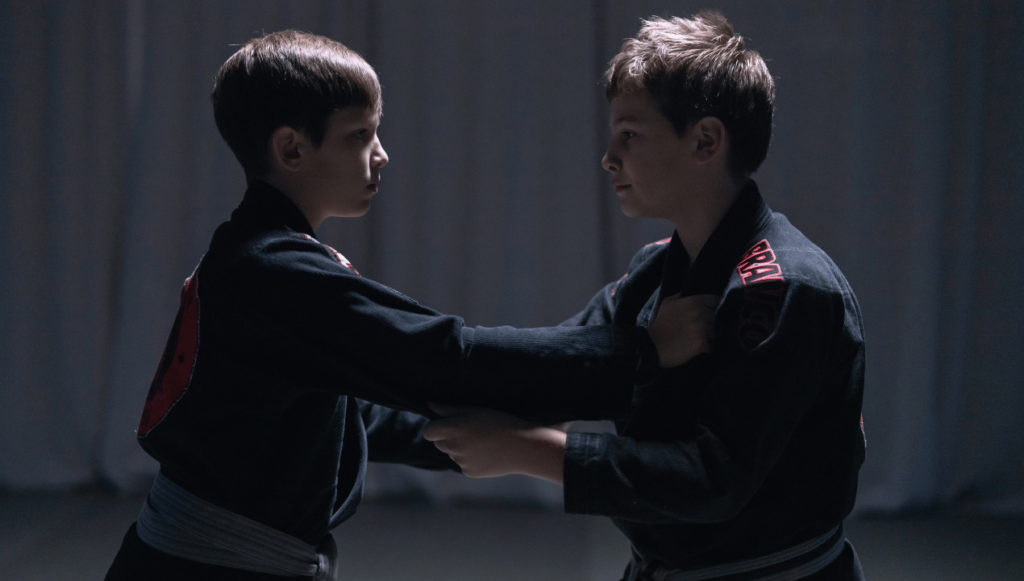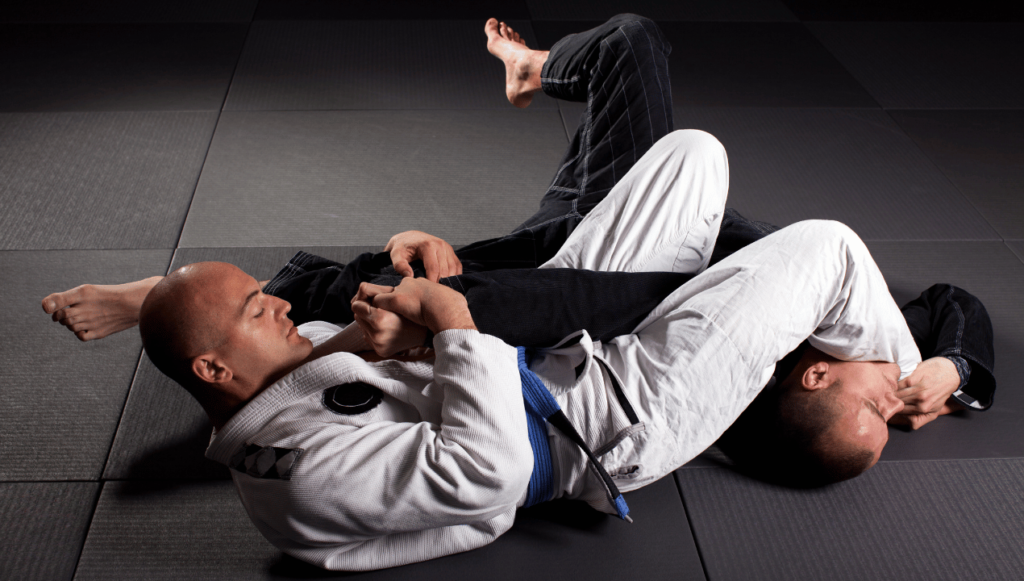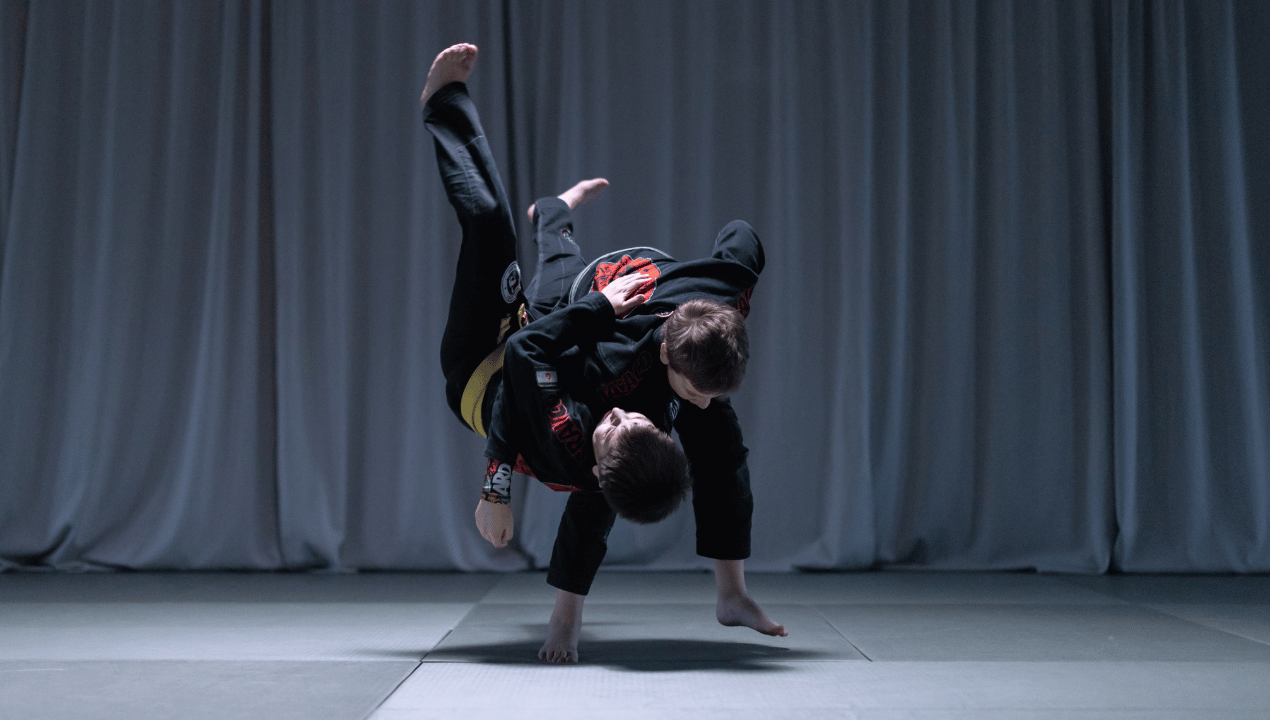If you’ve only watched modern MMA, you might think that Brazilian Jiu Jitsu (BJJ) vs Japanese Jiu Jitsu (JJJ) are the same.
But don’t be fooled, there are some substantial differences, similarities, and everything in between.
Keep reading to learn all about it!
- A Quick History Lesson of Japanese Jiu-Jitsu and BJJ
- Japanese Jiu Jitsu (Jujutsu) Origins
- BJJ Origins
- Similarities of BJJ vs Japanese Jiu Jitsu
- Differences Between BJJ vs Traditional Japanese Jiu Jitsu
- Rules
- Techniques
- Training and 'Equipment'
- Belt System and Progression
- Which is more practical and effective for self-defense in a street fight?
- BJJ Pros and Cons
- Japanese Jiu Jitsu Pros and Cons
- Which Should You Learn? BJJ vs Japanese Jiu Jitsu Summed Up
A Quick History Lesson of Japanese Jiu-Jitsu and BJJ
Jiu-Jitsu has its roots in Japanese history. To oversimplify it, we can say that most people were ruled by lords, and these lords kept armies.
Warriors often clashed with each other, and violence was not uncommon. In peacetime, members of the warrior class learned martial arts to use on the battlefield.
These early martial artists developed techniques to fight an armed opponent. In fact, some of the throws we still see today were intended to cripple or even kill an armored opponent.
But all this armor made kicks and punches useless, so early Japanese martial artists developed chokes and joint locks. These early techniques grew into the grappling martial arts we know now.
Japanese Jiu Jitsu (Jujutsu) Origins
Japanese Jiu Jitsu has its origins set in the Muromachi era between 1333 and 1573.
As Japanese society developed its rulers and citizens moved toward more peaceful arrangements. So, throughout the 1600s, laws were creating a time of peace.
To stay legal early, practitioners had to make rules and regulations. And as armor fell out of favor, practitioners were free to experiment with striking techniques. There was a lot of variation to Jujutsu (or Nihon koryu jujutsu), and different schools developed different systems.

Yet all schools emphasized saving energy and using position with momentum to gain the upper hand. Now there were rules to keep everyone safe schools started to compete with each other. These competitions were fantastic adverts for the effectiveness of JJJ.
Throughout the 19th Century, Japanese culture became increasingly westernized. The very formal, conservative traditions of JJJ became less popular. Instead, practitioners took JJJ techniques and developed them. This led to modern martial arts such as Sumo and Judo.
Nowadays, Japanese Jiu-Jitsu is an umbrella term for a wide range of grappling martial art styles and schools. There is no governing body, and the only agreed-upon standards are for competition only.
As a result, practitioners are free to use JJJ as a foundation for their own martial art systems.
BJJ Origins
In contrast, Brazilian Jiu-Jitsu (BJJ) is a relatively modern sport.
It starts with a single man’s (Mitsuyo Maeda) trip to Brazil. Maeda was a Judo champion. He had trained with the founder of judo and had run out of opponents in Japan.
The next step was to travel the world, demonstrating his skills and challenging other fighters. In 1917 Maeda arrived in Brazil. Carlos Gracie was so impressed at one demonstration that he decided to train with Maeda for the next 6 years. Carlos also included his brother Helio in the training.
Helio was of a much smaller build and struggled with many throws taught by Maeda. Instead, he focused on technical knowledge. And combined ground elements with the positions and leverage techniques taught by Maeda.
Helio studied these ground positions and ground attacks and developed a unique style. Helio’s goal was not to throw your opponent to the ground but for the primary focus to be ground fighting and ground techniques.
It must be said that Maeda had other students, and other families developed their own styles. But it was the Gracie family who popularized the art, first through challenges with other martial artists.
They finally found mainstream success when Royce Gracie used BJJ to win UFC 1, 2, and 4.
The fact that an average to smaller man could defeat much bigger opponents shocked audiences and inspired future fighters to get into the sport.
Similarities of BJJ vs Japanese Jiu Jitsu
The BJJ uniform (gi) and the use of a belt system are both drawn from Japanese jiu-jitsu, but the similarities between the two arts go deeper than that.
Both martial arts use momentum, position, and leverage to control and defeat your opponent. So techniques that work in one will also work in the other.
The philosophy of taking the path of least resistance has endured, so both arts emphasize energy efficiency over strength.

BJJ schools have kept JJJ’s focus on practicality. They have continued to develop and change; from Eddie Bravo’s 10th Planet system to the now renowned Danaher Death Squad.
Some more traditional BJJ schools have maintained the traditions of respect and honor that are so common in all Japanese martial arts.
These schools hang pictures of Helio Gracie above the mats, ask students to bow before stepping on the mats, and make lower belts deferential to higher belts. This used to be the norm, but BJJ has a more casual attitude nowadays.
Differences Between BJJ vs Traditional Japanese Jiu Jitsu
Whilst both arts clearly share the same heritage and many of the same techniques, there are still some distinctions between the two.
The most obvious key difference is that JJJ practitioners still train with basic striking and some “civilian” weapons, such as knives. This is very much a reflection of the warrior history of JJJ.
JJJ has also retained the gis (uniforms) seen in other traditional martial arts, whilst BJJ has both gi and no-gi.
BJJ, as a martial arts system, is also far more codified, making organizing competitions easier. The main organizing body is the International Brazilian Jiu-Jitsu Federation (IBJJF), and we also have a guide about their BJJ weight classes.
There are many other smaller organizations with their own variations of the rules. Speaking of which…
Rules
Most BJJ organizations follow a similar ruleset for competition. Points are awarded for holding a dominant position, transitioning to an even better position or sweeping an opponent. Of course, submitting an opponent results in an instant victory.
There are a few restrictions to stop serious injury. For example, heel hooks and leg attacks are restricted to higher belts.
These techniques apply vast amounts of pressure very quickly and can result in severe injuries. Slamming an opponent is also against most rules for the same reason.
BJJ has seen a lot of success with these rules, so much so that contemporary JJJ competitions uses them as a basis for their own.
But here’s what it looks like when the 2 compete:
Techniques
Regarding techniques, both BJJ and JJJ have thousands of moves with hundreds of thousands of details. But there are a few broad concepts that any practitioner should know:
Frames
Imagine you were pushing an opponent off you with a single hand. You can’t. Now imagine you used both hands and supported your elbows against your torso. You could hold this position for much longer. That is the essence of framing, using your body’s geometry to save energy.
Pressure
In a grappling exchange, good use of pressure can force your opponent to move into positions he/ she would otherwise avoid. Pressure on your neck will make you move your arms, creating further openings to attack.
Cross-faces
Cross-faces refer to turning an opponent’s head and hips in opposite directions. Just like pressure, this is very uncomfortable and forces more openings to appear.
Submissions
Joint locks, chokes, and extreme pressure or joint manipulation will make an opponent submit and instantly end a match.
Training and ‘Equipment’
Practitioners only need the right clothes and a padded floor to train.
Mouth guards are recommended, as is headgear, but if you are lightly sparring, the cost of entry is minimal. The fees for gyms fluctuate wildly, so make sure to shop around regardless.
Belt System and Progression
The BJJ belt system is similar to JJJ. White Belt is for beginners, Blue is next, followed by Purple, Brown, and finally, the classic Black Belt.
What skill level each belt denotes is not standardized. As a result, someone’s belt can only give you a vague idea about their skill level. BJJ’s culture of regular sparring means you’re unlikely to find someone with a high belt and no skill.
JJJ uses a belt system that is not too dissimilar to Judo (See Judo vs Brazilian Jiu Jitsu to learn more). As a result, it is far more formalized and codified than BJJ.
Which is more practical and effective for self-defense in a street fight?
As always, the best solution to a street fight is to run away, and neither system teaches that.
Both arts teach you how to manage distance and takedown an opponent, but you must practice extreme caution. You do not want to slam someone on concrete and kill them.
You do not want to roll on concrete and tear your skin up. You do not want to be fighting on the ground while a group of people is kicking you.
You want to be healthy and not arrested, so get good at running!
BJJ Pros and Cons
Here are some of the strongest pros and cons of Brazilian Jiu Jitsu:
Pros
There are a lot of pros to BJJ, to be brief:
- There is the obvious benefit of physical fitness, but it will also help your understanding of physiology.
- It also promotes lateral thinking as moves and sequences follow the path of least resistance, not the most obvious route.
- Finally, there’s the camaraderie that any contact sport brings, you may not find love on the mats, but you will find friends.
Cons
The cons are like those of any sport:
- There’s the risk of injury. This can be mitigated by tapping early and often, but injuries are going to happen in a sport designed for fighting.
- Cauliflower ears are common, and you must always be vigilant against ringworm and contagious diseases.
Japanese Jiu Jitsu Pros and Cons
Here are some of the strongest pros and cons of Japanese Jiu Jitsu:
Pros
- All of the benefits of BJJ are the same as in JJJ.
- But JJJ also has a long history and is part of Japanese culture.
- It also retains some weapon-based training you simply won’t see in a BJJ gym.
Cons
- Some observers have noted that a few JJJ techniques lack realism, especially concerning weapons and disarming.
- It is also harder to find a purely JJJ gym or school outside of Japan.
Which Should You Learn? BJJ vs Japanese Jiu Jitsu Summed Up
As with all things in life, there’s no correct answer.
See all the gyms in your area, drop in on a few classes. The place where you have the most fun is where you should start.
